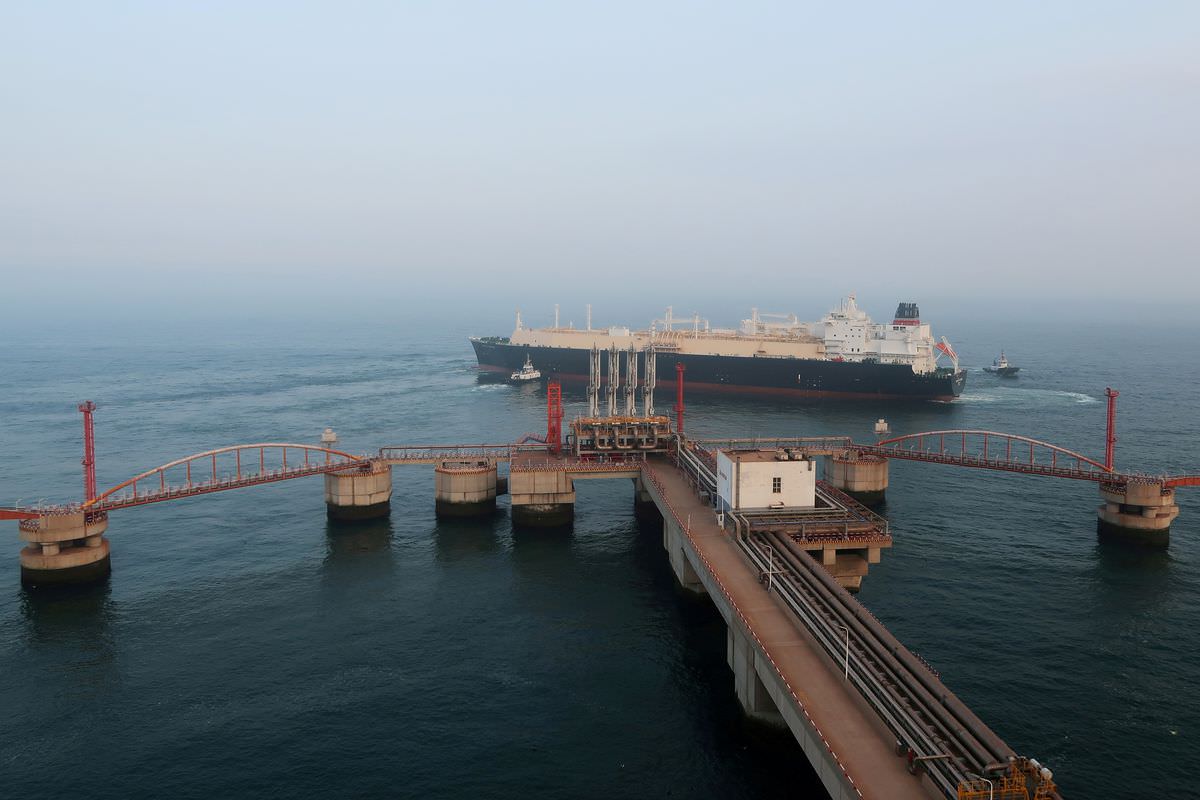China’s leaders worry that the country is too dependent on imports of liquefied natural gas.
By John Kemp (Reuters) – China’s reliance on imported gas is increasing despite government efforts to boost domestic output, creating an intensifying problem for both energy and national security.
China’s gas production increased by 6% in the first eight months of 2022 compared with the same period in 2021, according to the National Bureau of Statistics
Production has increased at a compound annual rate of 7% over the last ten years, doubling between 2011 and 2021, as the government encouraged the development of major fields in Sichuan, Xinjiang and the Ordos Basin. But consumption has grown even faster, at a compound rate of almost 11% over the same period, as more households have been connected to the distribution network.
Replacing wood, coal and bottled gas for residential and commercial heating and cooking has played a key role in reducing urban air pollution and improving quality of life.
The population with access to gas had climbed to 413 million in 2020, up from 286 million in 2015 and 170 million in 2010 (China statistical yearbook, NBS). The decade from 2010 to 2020 saw massive increases in gas access in Guangdong (+24 million), Shandong (+22 million) and Jiangsu (+19 million). There were also big increases in Sichuan (+14 million), Henan (+14 million) and Zhejiang (+14 million), Hubei (+12 million), Anhui (+10 million) and other provinces (+115 million). Gas accounted for more than 8% of China’s primary energy consumption in 2020 up from 4% in 2010 and just 2% in 2000.
China had become the world’s fourth-largest gas producer by 2021 (after the United States, Russia and Iran) but it was also the third-largest consumer (after the United States and Russia). In contrast to the United States and Russia, both of which were net exporters, China has increasingly been forced to turn to imports to meet its needs, becoming the largest importer of gas in the world.
China’s net import requirement climbed to 170 billion cubic metres in 2021 up from 29 billion cubic metres in 2011 (“Statistical review of world energy”, BP, 2022). The country relied on imported gas to meet 45% of its domestic consumption in 2021 up from 34% in 2016 and 21% in 2011.
LNG Pipelines Or Tankers
Growing reliance on imported gas has emerged as one of China’s biggest strategic vulnerabilities as relations with the United States and its allies have deteriorated. One-third of China’s gas imports arrive overland by pipeline, but two-thirds arrive by sea in the form of LNG, and the share is increasing.
Pipeline imports have grown at a compound annual rate of 15% over the last decade while LNG imports were up by 21% per year. Pipeline arrivals come mostly from central Asia (41 billion cubic metres) and Russia (8 billion), which have friendly diplomatic relations with China. But more than half of the total LNG imported comes from unfriendly countries, in particular, Australia (44 billion cubic metres) and the United States (12 billion).
Smaller LNG volumes are sourced from more neutral Qatar (12 billion cubic metres) and Malaysia (12 billion), as well as Russia (6 billion).
As a consequence, China is increasingly vulnerable to anything which disrupts the physical arrival of fuel. The vulnerability is concentrated on seaborne LNG, with a commercial or diplomatic embargo, sanctions or a military blockade becoming major risks.
Can China Protect Sea Lanes?
Despite a high priority on indigenising the energy system and reducing reliance on imports in the 13th Five-Year Plan (2016-2020) and 14th Five-Year Plan (2021-2025), the government has made limited progress.
The most conspicuous success has been building out a deepwater navy to protect sea lines of communication (SLOCs) and counter any attempt to intercept energy imports. But gas import reliance is increasing not reducing, and there has been little progress towards diversifying the source of supply to more friendly countries.
More pipelines from Siberia could eventually reduce reliance on LNG; Russia is anxious for new customers to replace markets lost in Europe as a result of its invasion of Ukraine. But the build-out of new pipelines would take years and is likely to result in only a marginal reduction in LNG requirements.
Also Read: Who’s Attacked The Nord-Stream Gas Pipeline Leak?
Increased deployment of renewables, which China has in abundance, and the electrification of domestic and commercial heating could eventually reduce the need for gas. But at the moment, most additional electricity is being used for power, not heating, and the number of residential gas connections is rising, not falling.
The best strategic option is still to increase domestic production and wait for the gas connection programme to be completed and for consumption to level off.

 Join The Club
Join The Club











